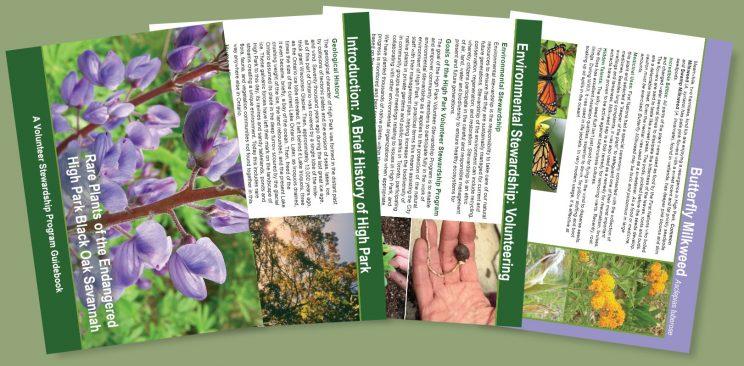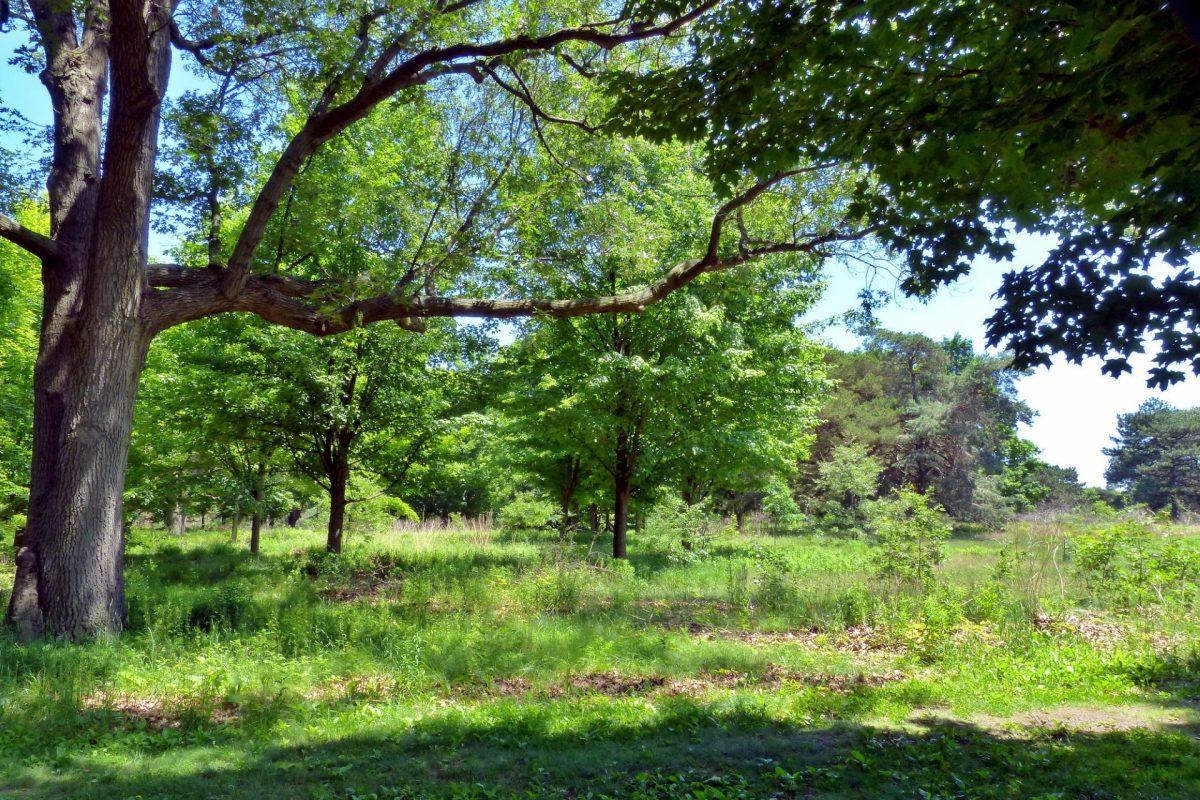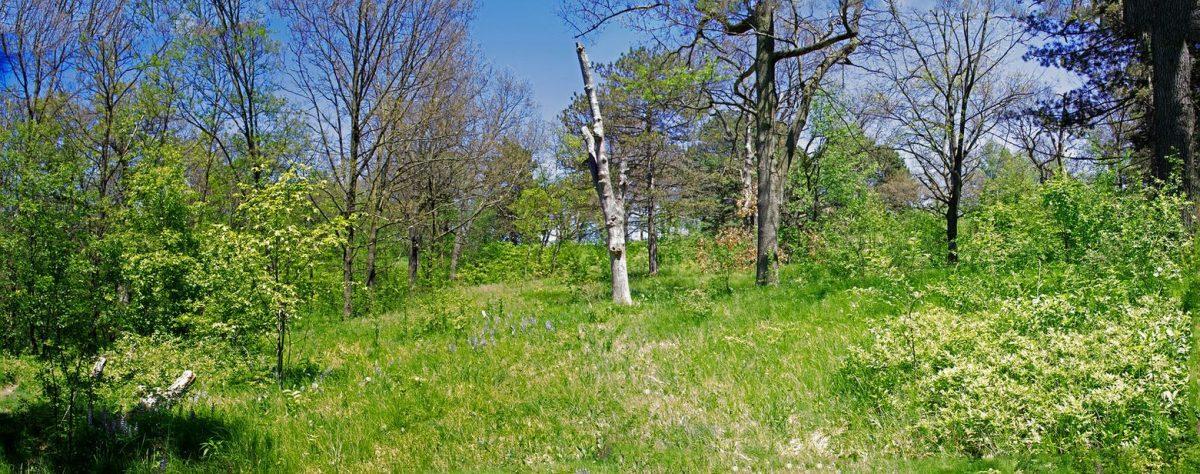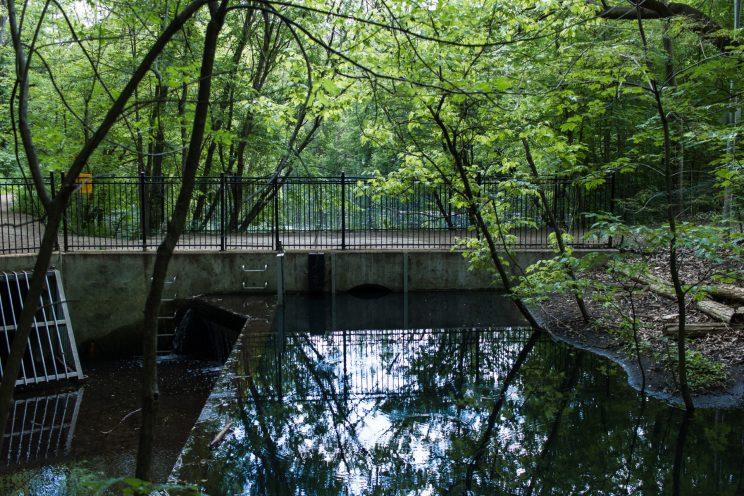by High Park Nature
High Park contains remnant oak woodland communities which were once common on the sand plains of the Great Lakes. Today less than 0.01 percent of these oak woodland communities remain in southern Ontario.

The large Black Oak trees (Quercus velutina) and many other plants, wildflowers, birds and insects dependent on these communities for their habitat are considered to be provincially rare by the Ministry of Natural Resources. Black Oak, found on dry sandy sites throughout the southern United States, is at the northern limit of its natural distribution in High Park. Extensive development of the Great Lakes region has all but eliminated these rare and endangered oak woodland communities.
About 1/3 of the park’s natural environment* consists of nationally rare oak savannah, an open, park-like landscape that contains widely spaced black oaks, scattered low shrubs and a rich variety of prairie grasses and wildflowers. Savannahs are dependent on periodic fire to maintain their open character and rich variety of plant species. Of the over 2 million ha of prairies and savannahs that once covered southern Ontario, less than 2,100ha (0.1%) remain today.
Experts consider the oak savannah at High Park to be "continentally significant" because it occurs near its northern limits...and because of the size, nature and characteristics of the remnant ecosystem.
* For more current information please see the High Park Terrestrial Biological Inventory, TRCA, 2019 Full Report and High Park Facts and Figures.
Some Common Plants of the Black Oak Savannah
TREES
- Black Oak
- Sassafras
SHRUBS
- Bush Honeysuckle
- Northern Dewberry
- Smooth Rose
- New Jersey Tea
- Shrubby St. John's Wort
GRASSES
- Big Bluestem
- Bottlebrush Grass
- Canada Wild Rye
- Indian Grass
- Little Bluestem
- Pennsylvania Sedge
- Sand Dropseed
- Switch Grass
- Wood Rush
FORBS/WILDFLOWERS
- Blazing Star
- Blue Harebell
- Brown-eyed Susan
- Butterfly Weed
- Cup Plant
- Early Goldenrod
- Gray Goldenrod
- Hairy Beardtongue
- Hoary Vervain
- New England Aster
- Showy Tick-Trefoil
- Sky Blue Aster
- Spreading Dogbane
- Upland White Aster
- Wild Bergamot
- Wild Columbine
- Wild Geranium
- Wild Lupine
High Park shelters 41 rare plant species, 32 of which appear in the savannah. Among these plants are nationally rare woodland fern-leaf, wild lupine and cup-plant.
Lupines on the Oak Savannah. Photo: Bob Yukich
A number of exquisite flowers and shrubs adorn these plains which rival any garden of beauty during the spring and summer months.
Catherine Parr Traill, 1836, describing the savannah south of Rice Lake. Catherine was an English-Canadian author and naturalist who wrote about life in Canada, particularly what is now Ontario (then the colony of Upper Canada).
Sources
See also
- Take a Guided Tour of the Black Oak Savannah with Sam Benvie
- Natural History of Toronto's High Park
- High Park's Rare Black Oak Savannah
- The Oaks of High Park
- Prairie Grasses in High Park
- Oak Savannas. Characteristics, Restoration and Long-Term Management (Wisconsin).
- Tallgrass Ontario.
- ON Nature magazine. A Garden of Rarities article by Lorraine Johnson, 2009.
- A Survey of the Prairies and Savannas of Southern Ontario, Wasyl Bakowsky and John L. Riley.
- Toronto Once had a Prairie! article by Frank Remiz in Toronto Field Naturalist newsletter, February 2017. More from Toronto Field Naturalists.
- High Park’s Black Oak Savannah. Article in SNAP, September 2013.
- High quality savannah areas in High Park.
High Park Tour with Sam Benvie
Featured external resource from Ryerson University
This guided tour of the Black Oak Savana and High Park ecosystem for Ecology and Sustainable Landscapes (CKLA 400), an online course offered at Ryerson University. The tour is led by Sam Benvie, an instructor with The Chang School.
Sources and references:
- YouTube video link.
- Google map link.
- Entire learning object link.
- Except otherwise noted, content in this video is licensed under YouTube's Creative Commons Attribution 3.0 Unported license.
- Featuring of the above content does not represent endorsement of High Park Nature site or organisation by Ryerson University.
High Park Stewards Guidebook: Rare Plants of the Endangered High Park Black Oak Savannah
A plant and habitat guide, history of High Park, account of volunteering experiences and catalog of stewardship resources all in one entertaining pocket-sized book.























